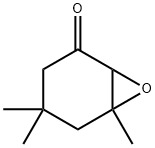Silver oxide
Synonym(s):Argentous oxide;Disilver monoxide;Disilver oxide;Silver oxide 99+
- CAS NO.:20667-12-3
- Empirical Formula: Ag2O
- Molecular Weight: 231.74
- MDL number: MFCD00003404
- EINECS: 243-957-1
- Update Date: 2025-01-27 09:38:02

What is Silver oxide?
Chemical properties
Silver(I) oxide, Ag2O, is made by action of oxygen under pressure on silver at 300 °C, or by precipitation of a silver salt with carbonate-free alkali metal hydroxide; it is covalent, each silver atom (in solid Ag2O) having two collinear bonds and each oxygen atom four tetrahedral ones; two such interpenetrating lattices constitute the structure.
Physical properties
Brownish-black cubic crystals; density 7.14 g/cm3 at 16°C; begins to decompose around 200°C, decomposition becoming rapid at 250 to 300°C; insoluble in water and ethanol; soluble in acids and alkalis; sparingly soluble in solutions of caustic alkalis; insoluble in alcohol.
The Uses of Silver oxide
Polishing glass, coloring glass yellow, catalyst, purifying drinking water, lab reagent, carbon dioxide scrubber, and chemical sensors. It is used in the preparation of other silver compounds, and silver-oxide batteries. In organic chemistry, silver oxide finds use as an oxidizing agent for aldehyes to produce carboxylic acids.
The Uses of Silver oxide
As catalyst; in the purification of drinking water; in the glass industry (polishing, coloring glass yellow).
The Uses of Silver oxide
Silver(I) oxide may be used in the synthesis of following:
- (RS)-malic acid
- 1,2-(o)-benzoquinone
- polysubstituted cyclic ethers
What are the applications of Application
Silver(I) oxide is a monoprotection mediator of symmetrical diols
Preparation
Silver(I) oxide is precipitated by mixing solutions of silver nitrate and caustic soda: 2AgNO3 + 2NaOH → Ag2O + 2NaNO3 + H2O.
General Description
Odorless brown-black solid. Sinks in water.
Reactivity Profile
Hydrogen sulfide is rapidly oxidized and may ignite in contact with Silver oxide [Bretherick 1979 p. 977]; Mixtures of metal sulfides, gold(III) sulfide, antimony sulfide or mercury (II) sulfide, phosphorus, sulfur, selenium, and selenium disulfide ignite on grinding with the oxide. Ammonia or hydrazine slowly react with Silver oxide forming silver nitride or in the presence of alcohol, silver fulminate may also be produced [Bretherick 1979 p. 203]. Oxidation of magnesium is explosive when warmed with Silver oxide.
Hazard
Fire and explosion risk in contact with organic materials or ammonia.
Health Hazard
Contact with eyes causes mild irritation. If continued for a long period, ingestion or inhalation of silver compounds can cause permanent discoloration of the skin (argyria).
Fire Hazard
Behavior in Fire: Decomposes into metallic silver and oxygen. If large quantities are involved, the oxygen might increase the intensity of the fire.
Flammability and Explosibility
Non flammable
Safety Profile
A poison by intraperitoneal route. Moderately toxic by ingestion. Flammable by chemical reaction; an oxidizing agent. Explodes in contact with ammonia. Incompatible with CuO, (NH3 + ethanol), (hydrazine + ethanol), CO, HzS, Mg, auric sulfide, Sb sulfide, Hg sulfide, nitroalkanes, Se, S, P, K, Na, NaK, seleninyl chloride. See also SILVER COMPOUNDS.
Purification Methods
Leach the oxide with hot water in a Soxhlet apparatus for several hours to remove any entrained electrolytes. [Glemser & Sauer in Handbook of Preparative Inorganic Chemistry (Ed. Brauer) Academic Press Vol II p 1037 1965.]
Properties of Silver oxide
| Melting point: | 300°C (dec.) |
| Density | 7,143 g/cm3 |
| storage temp. | Store below +15°C. |
| solubility | insoluble in ethanol; soluble in acid solutions, alkaline solutions |
| form | Powder/Solid |
| color | Dark-brown |
| Specific Gravity | 7.22 |
| Water Solubility | slightly soluble |
| Sensitive | Light Sensitive |
| Merck | 14,8521 |
| Stability: | Stable. Oxidiser. Incompatible with most common metals, ammonia, magnesium, many organic materials. |
| CAS DataBase Reference | 20667-12-3(CAS DataBase Reference) |
| EPA Substance Registry System | Silver(I) oxide (20667-12-3) |
Safety information for Silver oxide
| Signal word | Danger |
| Pictogram(s) |
 Flame Over Circle Oxidizers GHS03  Corrosion Corrosives GHS05  Environment GHS09 |
| GHS Hazard Statements |
H271:Oxidising liquids;Oxidising solids H318:Serious eye damage/eye irritation H410:Hazardous to the aquatic environment, long-term hazard |
| Precautionary Statement Codes |
P210:Keep away from heat/sparks/open flames/hot surfaces. — No smoking. P220:Keep/Store away from clothing/…/combustible materials. P273:Avoid release to the environment. P280:Wear protective gloves/protective clothing/eye protection/face protection. P283:Wear fire/flame resistant/retardant clothing. P305+P351+P338:IF IN EYES: Rinse cautiously with water for several minutes. Remove contact lenses, if present and easy to do. Continuerinsing. |
Computed Descriptors for Silver oxide
| InChIKey | KHJDQHIZCZTCAE-UHFFFAOYSA-N |
Silver oxide manufacturer
JSK Chemicals
ARRAKIS INDUSTRIES LLP
New Products
3-Iodophenylacetic acid 3-Pyridineacetonitrile, α-hydroxy- 2-Propanamine, 1-chloro-, hydrochloride (9CI) 3-(hexyloxy)-4-(pyridin-3-yl)-1,2,5-thiadiazole 2-Hexyn-1-ol Dibenzo-18-crown-6 Nickel(II) perchlorate hexahydrate, 98% 4-Bromophenylacetonitrile, 95% 3-Bromo-4-fluoroaniline, 97% Sodium tetraborate decahydrate, 98% Palladium(II) acetate, trimer, Pd 99% 4-Bromo-2-chlorotoluene, 97% N N Dimethylformamide Dimethyl Acetal (Dmf Dma) 2,3-Dichloro Benzoyl Cyanide [Side Chain] Bis(2-Chloroethyl) Amine Hydrochloride L-Glutamic Acid Diethyl Ester Hydrochloride 5-(Difluoromethoxy)-2-Mercaptobenzimidazole 1-Ethyl-3-(3-Dimethylaminopropyl)-Carbodiimide Hydrochloride [EDC Hcl] 1,4-Napthoquinone Bromoiodomethane Sodium Bicarbonate Methylene Dichloride (MDC) Ethyl Acetate Indole-3-Carbinol (I3C)Related products of tetrahydrofuran








You may like
-
 Silver(I) oxide 99%View Details
Silver(I) oxide 99%View Details -
 Silver(I) oxide CAS 20667-12-3View Details
Silver(I) oxide CAS 20667-12-3View Details
20667-12-3 -
 Silver (I) oxide CAS 20667-12-3View Details
Silver (I) oxide CAS 20667-12-3View Details
20667-12-3 -
 Silver (I) oxide CAS 20667-12-3View Details
Silver (I) oxide CAS 20667-12-3View Details
20667-12-3 -
 Silver(I) oxide CAS 20667-12-3View Details
Silver(I) oxide CAS 20667-12-3View Details
20667-12-3 -
 Silver Oxide pure CAS 20667-12-3View Details
Silver Oxide pure CAS 20667-12-3View Details
20667-12-3 -
 Silver Oxide extrapure AR CAS 20667-12-3View Details
Silver Oxide extrapure AR CAS 20667-12-3View Details
20667-12-3 -
 Silver oxide 99% CAS 20667-12-3View Details
Silver oxide 99% CAS 20667-12-3View Details
20667-12-3
